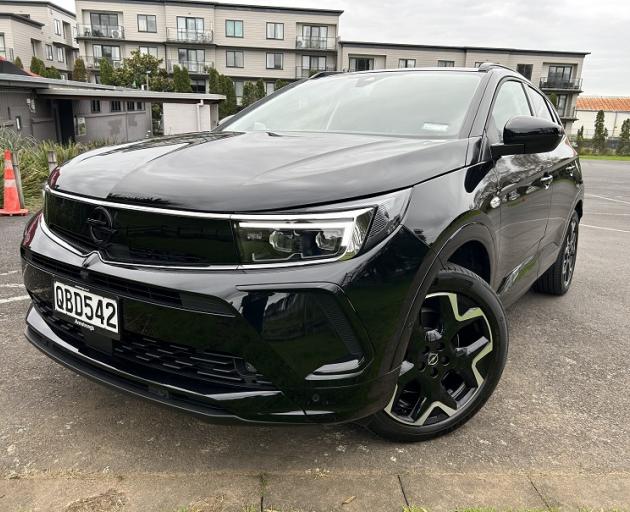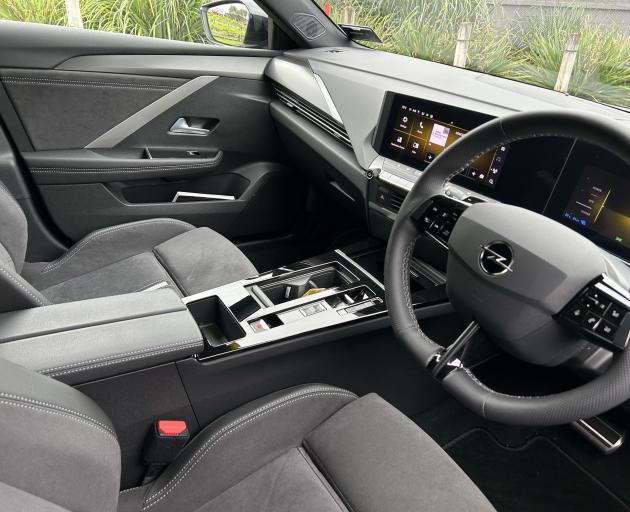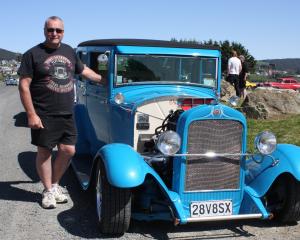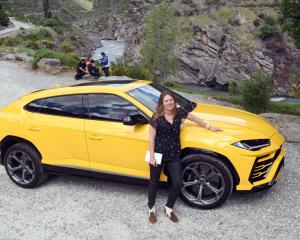
This observation from Auto Distributors chief executive Chris Brown, the national rights holder to the German Marque, Citroen and Peugeot brands, came at the media introduction to the latest Opel arrivals — the plug-in hybrid Astra GSe hatch and Grandland sports utility.
The cited reason for the day trip costing more than a two month voyage was a car transporter driver shortage, resulting when Ukrainians left those jobs to fight after Russia invaded 18 months ago.
"The Ukraine war might seem a long way away but to us, in the past 12 months, it has been very close," Mr Brown says.
Shipping costs from Europe have trebled since hostilities began.
Auto Distributors has decided to reduce the impact slightly by avoiding Le Havre, France.
From now on, everything will come via Zeebrugge, Belgium, which also means two ships a month, rather than one as before.
Prices should be going up. In fact, they have been dropping.

In response to broader market movements, it has twice this year cut its prices, first in April then again in August.
That’s why these new models have released with special pricing that snips $7,000 from the Astra and $8,000 from Grandland.
The campaign is ostensibly a "get-in quick" inducement.
The idea is that the standard RRPs will be reverted to either when current stock exhausts or by the end of September, whichever occurs first.
So what happens after that? Astra will likely stick more rigorously to the gameplay. It’s all new, after all.
Ultimately, this car will sell here in totally battery-fed form, thus making it a petrol, petrol electric and pure electric choice. It is not often that happens.
Grandland is heading to a fully electric future as well. But as this model has been in production since 2017 and was developed when Opel was owned by General Motors, it’s going to be retired in late 2024, the replacement being a battery-dedicated vehicle potentially with the same name, definitely all different otherwise.
The Grandland production line in Eisenach, Germany, is about to undergo a $NZ174million refit to prep for the electric.
Nonetheless, Opel NZ commercial manager Noah Robertson says current Grandland could maintain NZ availability until 2025.
The upside is that the factory could well become increasingly flexible on the incumbent car’s pricing, and Robertson agrees.
There’s no guarantee, but conceivably the longer it is here, the cheaper it might become. Time will tell.
By not seeing it until now, we at least see updates that arrived in 2022.

Time at the wheel of both Opels was brief. Both promise decent electric-only ranges and, when operating optimally, are fuel sippers, but as always it pays to bear in mind the worldwide harmonised light vehicles test procedure outcomes are not easily replicated on the road.
Astra GSe signals the start of a new electrified performance sub-brand for Opel.
Talk of it having chassis changes aimed at appealing to keener drivers sounds promising.
On the other hand, 0-100kmh in 7.5 seconds seems a bit meek. Perhaps it’s strength is more in the mid or top range? All this has yet to be determined.
Contrasting black door mirrors and a black roof are part of the look, so too the small diffuser at the rear and the distinctive 18-inch alloy wheels, whose design apparently draws inspiration from Opel’s exciting Manta GSe ElektroMod concept. Overall, though, the sportiness is subtle.
One interesting element is the absence of visible exhaust outlets.
That’s a decision made by Opel to promote the electrification aspect of the GSe line.
The interior includes a set of sports-styled front seats, which seem to be the only items within the cabin with the GSe logo. Unlike most hotties, it has not got a GSe start-up screen or even a badge to relate that this is the special one.
Bright colours are also absent, regardless that yellow is the official GSe hue.
Back in GM ownership, Opel’s performance aspiration sat behind a now defunct badge: OPC. The hot Astra from that era sold here as Holden Special Vehicles’ cars for a short time.
From what has been shared, it seems GSe cars aren’t supposed to be OPC substitutes, but instead are intended to offer a bit of a halfway house between mainstream and maniac.
With GSe, the steering has been tweaked to lend a more direct feel, it has Frequency Selective Dampers from Koni and the ride height is also decreased by 10mm.
It also takes a sports tyre.
Conceivably, the most punch will come from hybrid mode, whereby the electric motor and petrol engine work together.
These and paddle shifters work to spur the eight-speed auto along and, in Sport mode, the soundtrack has an augmented edge.
A 42-litre fuel tank seems small for a performance hatch, so clearly Opel expects a lot from the electric involvement.
The GSe is the Astra flagship so has a strong spec, with heated seats, a heated steering wheel and a 360-degree camera system for parking.
A suite of driver assistance systems includes wireless Apple CarPlay, Android Auto and a wireless charging pad implement.
- By Richard Bosselman






